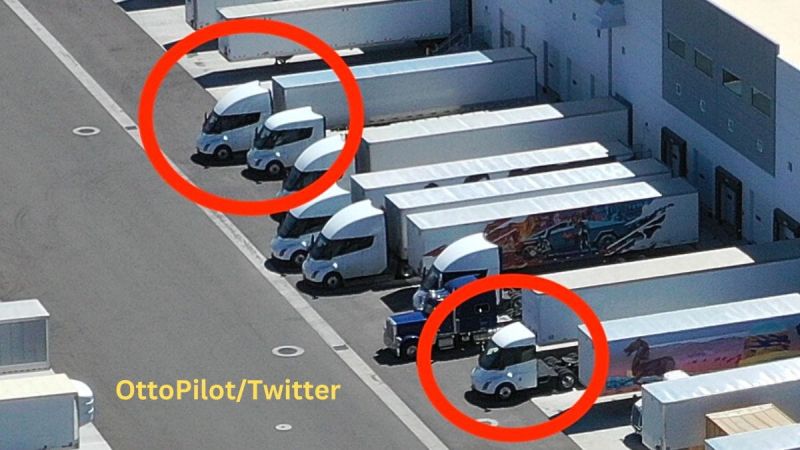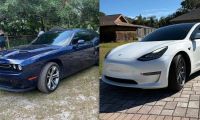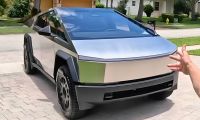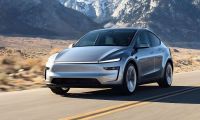Tesla enthusiasts and industry observers were in for a surprise when Twitter Tesla blogger OttoPilot shared images of three different versions of the Tesla Semi trucks spotted at Giga Nevada. The sighting has sparked speculation and excitement, as these new designs hint at a range of possibilities and potential improvements in the electric trucking industry.
Let's delve into the details and explore what these new versions of Tesla Semi trucks could mean for the future of transportation.
Variety in Design:
OttoPilot's recent tweet showcased the diversity in the Tesla Semi lineup. Until now, only two different designs were visible – one with a large cab and a high wind deflector, and another with a short cab and deflector.
However, the latest sighting revealed an extended cab with a lower wind deflector. This newfound variation in design has prompted discussions among Tesla followers and experts.
Yard Trucks and Local Delivery:
One of OttoPilot's followers, claiming to possess knowledge of the trucking industry, speculated that one of the shorter Tesla Semis in the images could be a yard truck.
Yard trucks are primarily used to move trailers within a truck yard, and the shorter size is advantageous for this purpose.
10 Tesla Semi today at GigaNV.. MORE interesting are the 3 different designs. Previously only seen two different visible designs (Large cab with high wind deflector and a short cab with short deflector. Now I spotted an extended cab with a lower wind deflector. pic.twitter.com/6zDMu7Zp1S
— OttoPilot (@6463dc) July 15, 2023
While some readers expressed skepticism about the inclusion of a seat, this design choice could make sense for local delivery trucks that operate within a 50-mile radius. By eliminating unnecessary features, Tesla could potentially reduce costs and weight for these specific fleet applications.
Aero Optimization and Testing:
While the emergence of three distinct versions of the Tesla Semi trucks is intriguing, it could also be a result of Tesla's efforts to optimize aerodynamics for different trailer configurations. Tesla may be testing the effectiveness of higher cones, similar to those Tesla Semis provided to Pepsi, and assessing their impact on overall efficiency.
Some Tesla Semis were observed with flat tops, while others had higher cones like those seen on the Pepsi Tesla Semi trucks. The flat top design could potentially reduce wind resistance, especially for various load profiles, while the higher cone design might be more suitable for long-haul highway transportation with standard vans, trailers, or pan techs.
Unveiling Event and Market Considerations:
The emergence of these new Tesla Semi versions has raised speculation about an upcoming unveil event. However, considering the current focus on the Cybertruck, it is more likely that Tesla will delay any Semi-related announcements until after the Cybertruck deliveries commence.
Furthermore, the shorter Tesla Semi truck design raises questions about its suitability for the European market, where regulations mandate shorter semicabs. This consideration further fuels anticipation regarding Tesla's future plans for international expansion.
Industry Standards or Unique Features?
The differences observed among the three versions of Tesla Semi trucks have led to discussions about whether they represent standard options within the trucking industry or unique Tesla features. Some readers believe that these variations are common among semi-truck manufacturers, with each version serving a specific purpose.
The top version of the Tesla Semi in the image, often referred to as the studio sleeper, features a high roof and a spacious sleeper area. The mid-roof version is commonly used for pulling flatbed trailers due to its reduced height, while the bottom version, known as the Day Cab, is favored by local drivers.
Battery and Range:
One crucial aspect of these new Tesla Semi trucks that remains shrouded in mystery is the battery capacity and range for each model. Unfortunately, the available information does not provide any details regarding the specific batteries or range per charge. However, considering Tesla's commitment to cutting-edge technology and range optimization, it is reasonable to expect that all three models will deliver impressive mileage capabilities, contributing to the overall success and adoption of electric trucks.
Armen Hareyan is the founder and the Editor in Chief of Torque News. He founded TorqueNews.com in 2010, which since then has been publishing expert news and analysis about the automotive industry. He can be reached at Torque News Twitter, Facebok, Linkedin, and Youtube.












